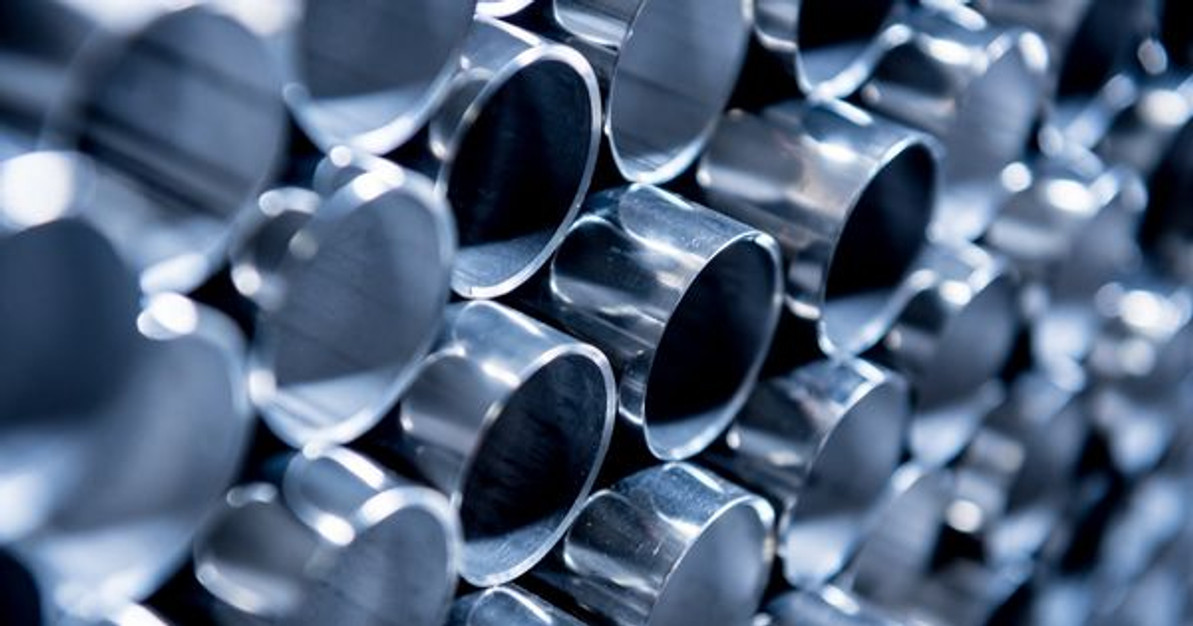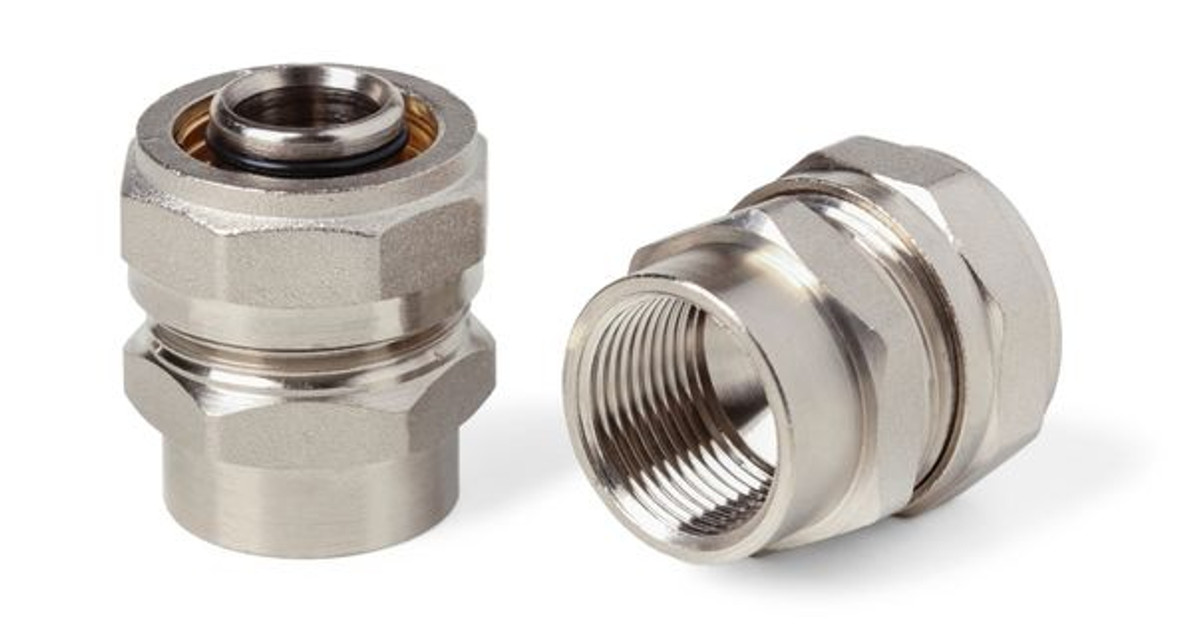 Mar 16th 2017
Mar 16th 2017 Sanitary Stainless Steel Fittings: 9 Facts About Stainless Steel

Chemseal is very excited about everything related to stainless steel, from the history of stainless steel, to the many practical uses of stainless steel, and now to various stainless steel facts. How could something seemingly mundane be so exciting? Stainless steel is everywhere! In our last post, our sanitary stainless steel fittings company looked at the history of stainless steel, which isn’t much older than 100 years. Now, we’ll take a look at some lesser-known facts about stainless steel, a cornerstone of our business and a material that we choose for our wide selection of sanitary stainless steel fittings.
1. STAINLESS STEEL CAN EXPAND AND CONTRACT
Because stainless steel has a high temperature oxidation resistance, it is very valuable in the nuclear power and aerospace industries. However, while stainless steel has a significantly higher resistance than many other metals, it still expands and contracts when the temperature varies.
Construction industries have to account for various thermal expansion when creating a steel frame for a building due to stainless steel’s expansion and contraction properties. For example, The Eiffel Tower is approximately 984 feet tall during the summer. On a cold day in the winter, however, The Eiffel Tower is about six inches shorter than its normal height due to stainless steel’s temperature contraction properties.
2. STAINLESS STEEL IS RECYCLABLE
As it turns out, steel is one of the most recycled materials on the planet. In fact, approximately 88 percent of the world’s steel is recycled, according to the American Iron and Steel Institute. Furthermore, two out of three tons of new steel come from old steel.
Steel byproducts can also be recycled instead of recycling whole pieces of steel. Various recycled steel byproducts include mill scale, processing liquids, and steelmaking slags. Additionally, steelmaking dust and sludge can also be recovered and reused to make other metals, including zinc.
3. STAINLESS STEEL CAN BE MADE INTO ‘SOAP’
Could you imagine stainless steel turned into soap? Well, this probably isn’t the kind of soap you’re thinking of. Many reputable manufacturers produce stainless steel soap, which is basically a piece of stainless steel in the shape of a soap bar.
The reason that it’s called ‘soap’ is because you rub the piece of softened stainless steel on your hands, just like you would with a traditional soap bar. While stainless soap does not kill germs or other bacteria like regular soap would, stainless steel soap can neutralize strong odor on the hands. Like regular soap, simply rub the bar of stainless steel on your hands after handling something smelly, like garlic, onion, or fish - most of the smell should disappear. Although it is not entirely clear why the stainless steel eliminates odors, some researchers think that it’s because the stainless steel binds to sulfur compounds in various substances, which reduces odors.
4. STAINLESS STEEL CAN ACTUALLY STAIN
You might be thinking, “Really? But it’s stainless!” Though this sounds confusing, stainless steel isn’t impossible to stain. Stainless steel comes from a family of materials that resist oxidation and corrosion, which gives it the ability to resist rust and unsightly blotches. When stainless steel is exposed to oxygen and moisture, stainless steel produces a thin oxide film that coats the metal. Essentially, stainless steel has the ability to repair itself.
This protective thin oxide film will fade over time, however. Fading will lead to pitting and corrosion of the film. In order to properly maintain stainless steel, it is imperative to regularly clean its surface and ensure that the steel has an adequate supply of oxygen in order to maintain the film.
5. SOME STAINLESS STEEL CAN BE MAGNETIC
In most cases, stainless steel is a non-magnetic material. However, certain types of stainless steel can, in fact, be magnetic. Its magnetic properties depend on its microstructure. For instance, martensitic stainless steels contain a certain combination of chromium, molybdenum, and carbon that makes the metal ferromagnetic. As such, martensitic stainless steel can exhibit permanent magnetic properties if it becomes magnetized during its hardening process.
6. STAINLESS STEEL HAS ANOTHER NAME
Stainless steel is also known as ‘inox steel’ or ‘inox’ from the French word ‘inoxydable,’ which refers to stainless steel anti-corrosive and antioxidant properties. Inox steel has many applications, including kitchenware and jewelry. The name time you see inox steel written out instead of stainless steel, fear not because they are the same thing.
7. STAINLESS STEEL CAN BE WORN
That’s right, stainless steel is officially the latest fashion trend. We’re not telling you to wear around metal all day, but it is interesting to know that stainless steel can be woven and worn. Stainless steel is incredibly ductile, which means that it can be drawn out into a thin wire without losing its relative toughness. As a matter of fact, many stainless steel manufacturers produce stainless steel mesh that is fine enough and pliable enough to wear.
More than a strange fashion trend, stainless steel clothing has practical applications, too. Stainless steel clothing is thermal and radiation resistant, so it is frequently used in the electrical and textile industries as safety clothing.
8. STAINLESS STEEL MIMICS HUMAN TOUCH
Stainless steel thread is a key component in the tech industry and is often used in touchscreen gloves. Capacitive touchscreens can detect the presence of an electrically conductive object, like a finger. So, stainless steel gloves conduct electricity in such a way that it actually mimics a finger’s electrical current.
9. STAINLESS STEEL CAN MINIMIZE STATIC ELECTRIC SHOCK
Some manufacturers will intentionally weave stainless steel into carpet. The stainless steel prevents the buildup of static electricity, which reduces the chances of a shock occurring. The stainless steel is so fine, however, that you’d never feel it walking around on the carpet. Sometimes, the small things count.
Though we all know and love stainless steel as our refrigerator, stove, grill, cooking pan, or even that fancy new exhaust on your car, there are even more ways to enjoy and appreciate all of the versatility and utility that stainless steel offers. Chemseal’s array of stainless steel sanitary valves, sanitary stainless steel fittings, and stainless steel tubing makes many industries possible, and only adds to the limitless applications of stainless steel.
 Mar 16th 2017
Mar 16th 2017 Recent Posts
-
Nov 7th 2022
What Is Food-Grade Stainless Steel Tubing?
Businesses that produce food and beverage products must operate hygienically. Sterile environments a …Nov 7th 2022
-
Oct 11th 2022
Why Sanitary Fittings Are Important for the Medical Industry
Sanitary fittings are useful for many industries. Food and beverage manufacturers have used these to …Oct 11th 2022
-
Sep 23rd 2022
What Is the Max Operating Temperature for Stainless Steel?
Stainless steel is valued in many industrial applications because it’s capable of withstanding high …Sep 23rd 2022




